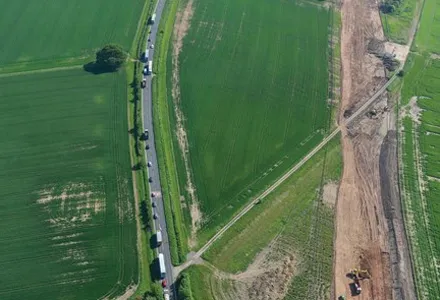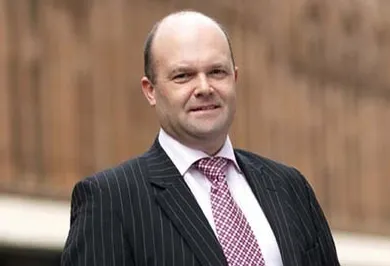The Australian Institute of Landscape Architects (AILA) fear the design of the proposed multi-billion dollar East West Link highway in Melbourne will have a “substantial visual, environmental and amenity” impact on peoples quality of and the open spaces they enjoy. Kirsten Bauer, president of the AILA Victorian Chapter, has attacked the plans for the 18km tolled motorway, set to run from the western suburbs to the Eastern Freeway, after she and other Victorian AILA members had reviewed the “so called detai
August 6, 2013
Read time: 3 mins
RSSThe Australian Institute of Landscape Architects (AILA) fear the design of the proposed multi-billion dollar East West Link highway in Melbourne will have a “substantial visual, environmental and amenity” impact on people’s quality of life and the open spaces they enjoy.
Kirsten Bauer, president of the AILA Victorian Chapter, has attacked the plans for the 18km tolled motorway, set to run from the western suburbs to the Eastern Freeway, after she and other Victorian AILA members had reviewed the “so called detailed design” information on the East West Link provided by Linking Melbourne Authority.
“As professionals who are often involved with design and assessment of infrastructure and open space projects we can read between the lines of available information, and we believe the Authority is not adequately communicating the substantial visual, environmental and amenity impacts of the current proposal on open space and the future liveability of Melbourne’s inner north, which is planned for substantial increase in density over coming decades,” said Bauer.
The senior AILA figure said the process of developing and evaluation of the design, including consideration of options, had not been transparent, as is “normal for much less significant road infrastructure projects”.
She added, “It appears that an explanation of the substantial impact of this design proposal on Royal Park and Moonee Ponds Creek is avoided through corporate control of drawings and text explaining the design as part of the project consultation programme. The Linking Melbourne Authority has not provided any scaled drawings, traffic projections or detail about construction and proposed remediation. The design, environmental impact and cost benefit of lower impact road alignment options that would, or should have been explored, are not revealed. The community is currently presented with one unsatisfactory design solution that is inadequately presented and appears to have been explained by the Authorities’ media spin doctors.”
Continuing her criticism of the East West Link project design, Bauer said that only a driver’s perspective of the view from the road is represented in video modelling. “Accurate detailed drawings would have been required to prepare the modelling and feasibility yet these are not made available. The Linking Melbourne web site and community consultation programme is not genuine in its attempts to objectively explain the project or and as a consequence, to establish the real level of community support,” said Bauer.
Given its status as the “biggest Victorian Infrastructure project ever”, Bauer said the public deserved a “rigorous and transparent” design development and evaluation process before deciding on such a significant commitment that will “influence the character, quality and sustainability of Melbourne for many decades”.
The Victorian Government has allocated AUD$294 million in its 2013 Budget for the first stage of the East Link project—a 6km tunnel from Hoddle Street, Clifton Hill to CityLink at Parkville—with work due to begin at the end of 2014 and finish by 2019. The total cost of the project is estimated to be $15 billion to $17 billion.
Linking Melbourne Authority believe the East West Link will provide many benefits such as improving cross city connections, reducing over reliance on the M1, reducing congestion, improving freight efficiency, enhancing liveability and contributing to urban and economic development.
Kirsten Bauer, president of the AILA Victorian Chapter, has attacked the plans for the 18km tolled motorway, set to run from the western suburbs to the Eastern Freeway, after she and other Victorian AILA members had reviewed the “so called detailed design” information on the East West Link provided by Linking Melbourne Authority.
“As professionals who are often involved with design and assessment of infrastructure and open space projects we can read between the lines of available information, and we believe the Authority is not adequately communicating the substantial visual, environmental and amenity impacts of the current proposal on open space and the future liveability of Melbourne’s inner north, which is planned for substantial increase in density over coming decades,” said Bauer.
The senior AILA figure said the process of developing and evaluation of the design, including consideration of options, had not been transparent, as is “normal for much less significant road infrastructure projects”.
She added, “It appears that an explanation of the substantial impact of this design proposal on Royal Park and Moonee Ponds Creek is avoided through corporate control of drawings and text explaining the design as part of the project consultation programme. The Linking Melbourne Authority has not provided any scaled drawings, traffic projections or detail about construction and proposed remediation. The design, environmental impact and cost benefit of lower impact road alignment options that would, or should have been explored, are not revealed. The community is currently presented with one unsatisfactory design solution that is inadequately presented and appears to have been explained by the Authorities’ media spin doctors.”
Continuing her criticism of the East West Link project design, Bauer said that only a driver’s perspective of the view from the road is represented in video modelling. “Accurate detailed drawings would have been required to prepare the modelling and feasibility yet these are not made available. The Linking Melbourne web site and community consultation programme is not genuine in its attempts to objectively explain the project or and as a consequence, to establish the real level of community support,” said Bauer.
Given its status as the “biggest Victorian Infrastructure project ever”, Bauer said the public deserved a “rigorous and transparent” design development and evaluation process before deciding on such a significant commitment that will “influence the character, quality and sustainability of Melbourne for many decades”.
The Victorian Government has allocated AUD$294 million in its 2013 Budget for the first stage of the East Link project—a 6km tunnel from Hoddle Street, Clifton Hill to CityLink at Parkville—with work due to begin at the end of 2014 and finish by 2019. The total cost of the project is estimated to be $15 billion to $17 billion.
Linking Melbourne Authority believe the East West Link will provide many benefits such as improving cross city connections, reducing over reliance on the M1, reducing congestion, improving freight efficiency, enhancing liveability and contributing to urban and economic development.








